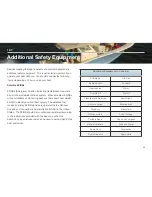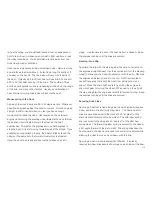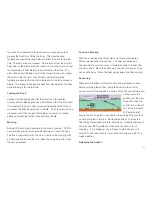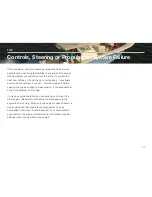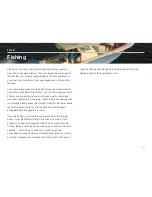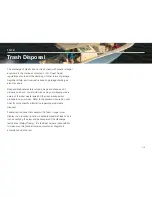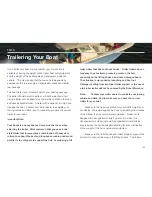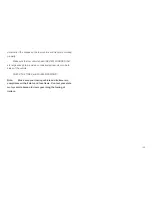
to boat handling, you should take lessons from an experienced
pilot to learn how to maneuver your boat in tight quarters in less
than ideal conditions. You should also practice away from the
dock during windy conditions.
Dock lines are generally twisted or braided nylon. Nylon is strong
and stretches to absorb shock. It also has a long life and is soft
and easy on the hands. The line’s size will vary with the size of
the boat. Typically a 30 to 40 foot boat will use 5/8-inch line and
a 20 to 30 foot boat will use 1/2-inch line. The number of lines
and their configuration will vary depending on the dock, the range
of the tide, and many other factors. Usually a combination of
bow, stern and spring lines is used to secure the boat.
Maneuvering to the Dock
Approach the dock slowly at a 30 to 40 degree angle. Whenever
possible, approach against the wind or current. Turn the engines
straight & shift to neutral when you feel you have enough
momentum to reach the dock. Use reverse on the outboard
engine while turning the steering wheel towards the dock to slow
the boat and pull the stern toward the dock as the boat
approaches. Straighten the engines and use both engines to
stop the boat if it is still moving forward against the pilings. If you
executed your approach properly, the boat will lightly touch the
pilings at the same time the forward momentum is stopped.
Have the dock lines ready and secure the boat as soon at it
stops. Use fenders to protect the boat while it is docked. Keep
the engines running until the lines are secured.
Backing into a Slip
Approach the slip with the stern against the wind or current and
the engines straight ahead. Use the engines and turn the steering
wheel to maneuver the boat into alignment with the slip. Reverse
the engines and slowly back into the slip. Shift from reverse to
neutral frequently to prevent the boat from gaining too much
speed. Move the stern right and left by shifting the engines in
and out of gear or turning the wheel. When nearly in the slip all
the way, straighten the engines and shift to forward to stop. Keep
the engines running until the lines are secured.
Securing Dock Lines
Securing a boat that is tied along side the dock typically requires
a bow and stern line and two spring lines. The bow and stern
lines are usually secured to the dock at a 40° angle aft of the
stern cleat and forward of the bow cleat. The after bow spring
line is secured to the dock at a 40° angle aft of the after bow
spring cleat. The forward quarter spring is secured to the dock at
a 40° angle forward of the stern cleat. The spring lines keep the
boat square to the dock and reduce fore and aft movement while
allowing the boat to move up and down with the tide.
Securing a boat in a slip is somewhat di
ff
erent. It typically
requires two bow lines secured to pilings on each side of the bow,
110
Summary of Contents for 320 LXF
Page 1: ...320 LXF Scout Boats OWNER MANUAL ...
Page 2: ...Chapter 1 Owner s Information Warranty Certification and Boat Information ...
Page 11: ...Chapter 2 Propulsion A guide to your boat s propulsion system ...
Page 32: ...Chapter 4 Fuel System An overview of the fuel system of your boat ...
Page 40: ...Chapter 5 Electrical System An overview of the electrical system of your boat ...
Page 54: ...Chapter 6 Fresh Water System An overview of the fresh water system of your boat ...
Page 59: ...Chapter 7 Raw Water System An overview of the raw water system of your boat ...
Page 65: ...Chapter 8 Drainage System An overview of the drainage system of your boat ...
Page 70: ...Chapter 9 Ventilation System An overview of the ventilation system of your boat ...
Page 73: ...Chapter 10 Exterior Equipment An overview of the exterior equipment on your boat ...
Page 83: ...Chapter 11 Interior Equipment An overview of the interior equipment on your boat ...
Page 88: ...Chapter 12 Safety Equipment An overview of the safety equipment on your boat ...
Page 99: ...Chapter 13 Operation A general guide to operating your boat ...
Page 124: ...Chapter 14 Routine Maintenance A guide to keeping your boat running in good condition ...
Page 147: ...Chapter 16 Appendix Reference documents logs and schematics for your boat ...
Page 154: ...153 ...
Page 155: ...154 ...
Page 156: ...155 ...
Page 157: ...156 ...
Page 159: ...158 ...
Page 160: ...159 ...
Page 162: ...161 ...

